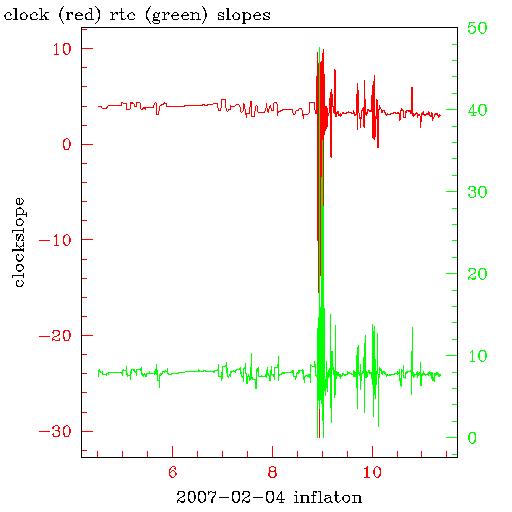
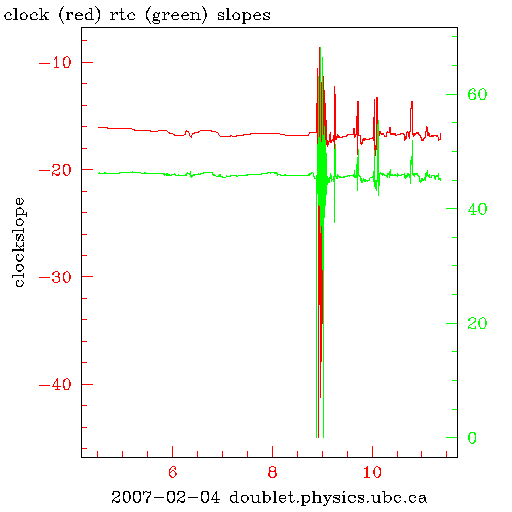
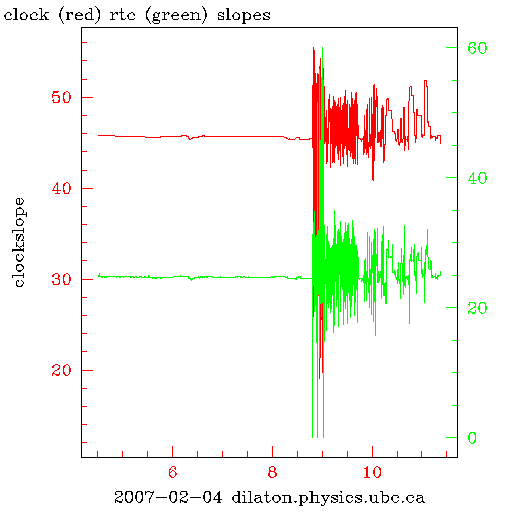
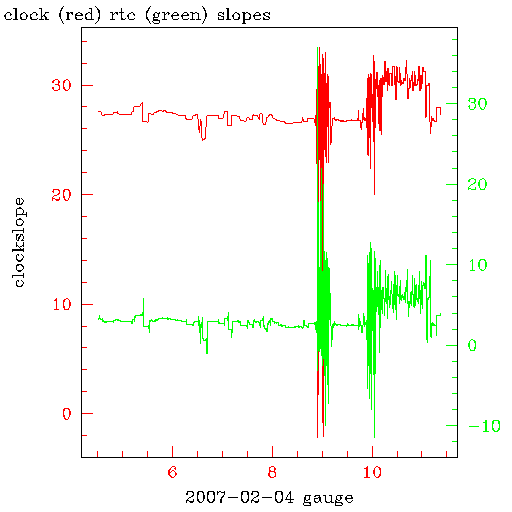
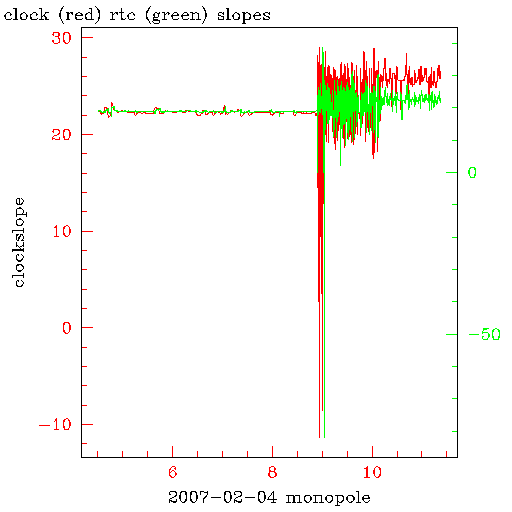
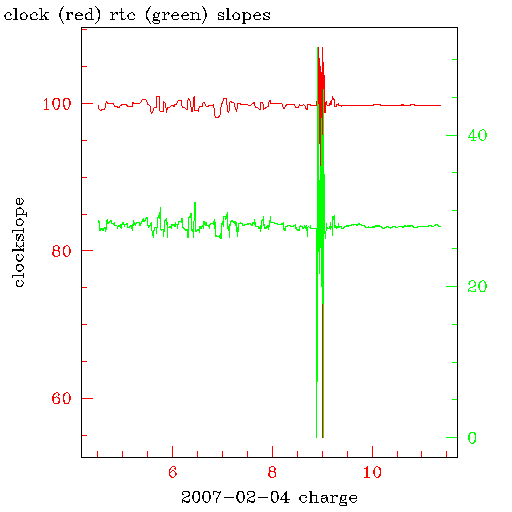
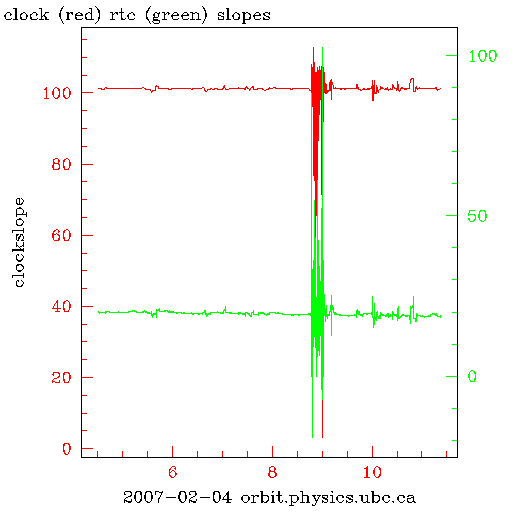
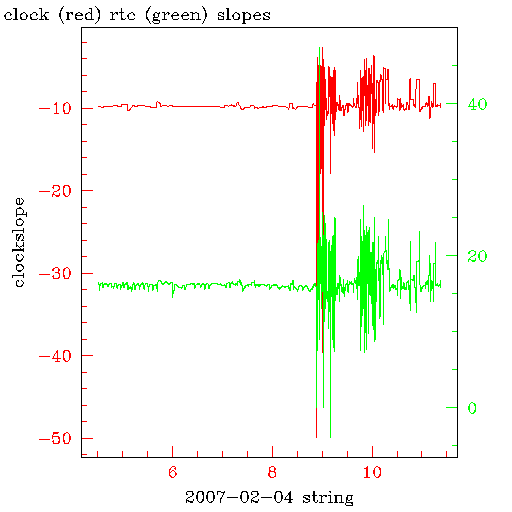
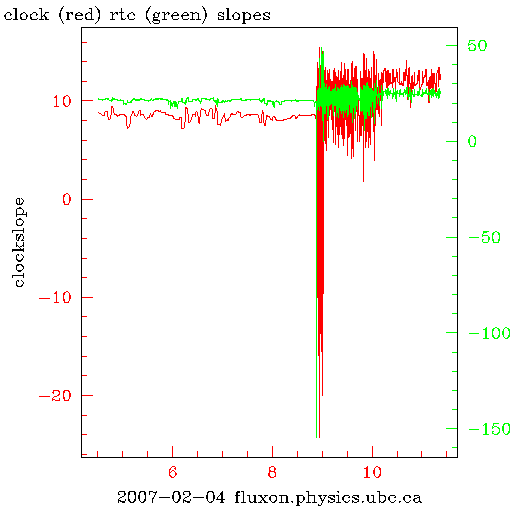
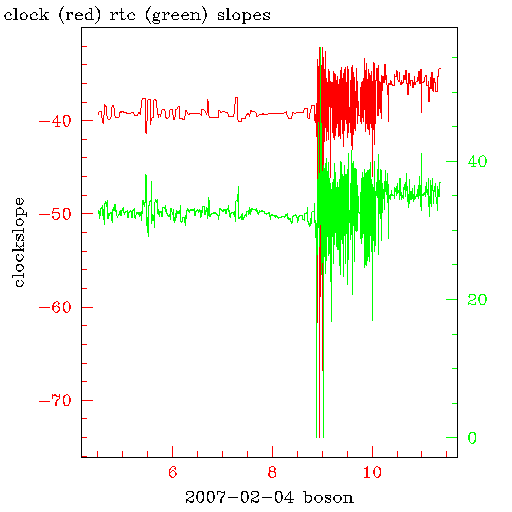
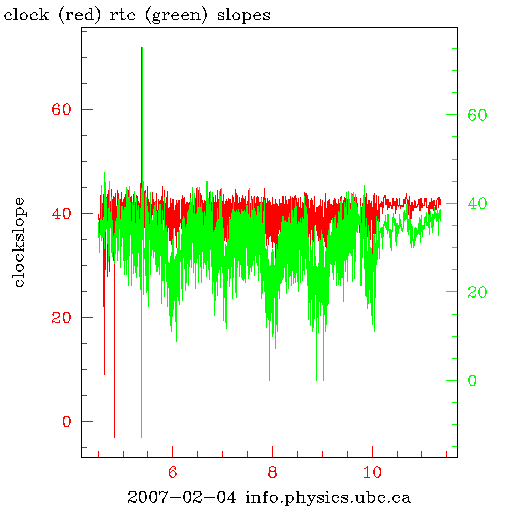
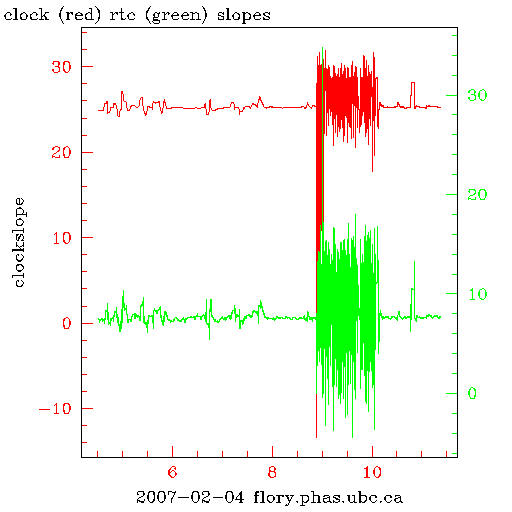
The following graphs show the fluctuations in the rates of the system clock and of the real time clocks on a variety of computers on the theory network. All synchronize against the same system, ntp.ubc.ca, a stratum 2 ntp server on campus ( the time delay is on the order of 100s of microseconds to that machine from any of these computers).
The following graphs plot the rate of the system clock vs the ntp server (red line and left hand scale) and the rate of the RTC vs the system clock(real time clock-- the CMOS clock)( dotted lines and right hand scale) against the time in days after 00:00 on the date shown. The rates are in units of microseconds per second. These rates are determined by comparing the reading on the system clock with the ntp determined times on the NTP server to adjust the rate of the system clock, and the rate of the RTC vs the system clock. Note that the strong correlation between the rate fluctuations suggests that the system clock is the primary source of noise, and that in general the RTC has better stability than does the system clock.
The huge instability in the case of one of the machines, info, is unexplained. It is a server, so that may play a roll, or the system clock may simply be inherently poor. Note that there is little difference between nighttime when it does little serving, vs daytime.
Since the time between comparison of the system clock vs the NTP server is of the order of 100-1000 sec, the noise rate in the case of the best system would correspond to less than a millisecond drift
|
|
|
|
|
|
|
|
|
|
|
|
|
|
|
|
|
|
|
|
|
inflaton
One 450MHz Intel Pentium III Processor, 128M RAM, 903.19 Bogomips Total
doublet
Two 450MHz Intel Pentium III Processors, 256M RAM, 1805.35 Bogomips Total
dilaton
One 750MHz Intel Pentium III Processor, 256M RAM, 1498.05 Bogomips Total
gauge
One 750MHz Intel Pentium III Processor, 256M RAM, 1498.00 Bogomips Total
monopole
One 750MHz Intel Pentium III Processor, 384M RAM, 1498.05 Bogomips Total
charge
One 935MHz Intel Pentium III Processor, 384M RAM, 1872.92 Bogomips Total
orbit
One 935MHz Intel Pentium III Processor, 256M RAM, 1872.86 Bogomips Total
string
One 1.6GHz Intel Pentium 4 Processor, 512M RAM, 3194.28 Bogomips Total
fluxon
One 2.67GHz Intel Pentium 4 Processor, 0.99GB RAM, 5339.53 Bogomips Total
boson
Two 2.8GHz Intel Pentium 4 Processors, 0.98GB RAM, 11179.02 Bogomips Total
info
Two 3GHz Intel Pentium 4 Processors, 0.99GB RAM, 12008.29 Bogomips Total
flory
Two 3GHz Intel Intel(R) Pentium(R) D CPU 3.00GHz Processors, 1GB RAM, 12008.64 Bogomips Total
Note that the best behaviour tends to come from the older motherboards-- the worst(info) is from a relatively new Intel motherboard (915GAG). (the last four are all Intel motherboards)
These rate fluctuations do not represent the actual clock accuracy, (in general chrony keeps the clocks to within a millisecond or less) but do represent the stability in the onboard system clock (driven from the bus frequency) and to some extent the real time clock. As chrony works, it measures the real time clock against the system clock, so an unstable system clock would produce an apparently unstable real time clock. In general the RTC seems to be more stable than is the system clock ( the correleated fluctuations in the system and RTC would suggest that a fair amount of the RTC instability comes from the system clock, rather than the RTC itself. )